Meet the surviving headhunters of Nagaland in Longwa & Hongphoi
About the Blog – The last surviving headhunters from Konyak Tribe of Nagaland will soon become history and only stories will remain. The blog is about travelling to Longwa and Hongphoi Village in Mon District of Nagaland to meet the last surviving tattooed ex-headhunters and warriors, walk into Myanmar and getting to know the people and culture of Konyak tribe.
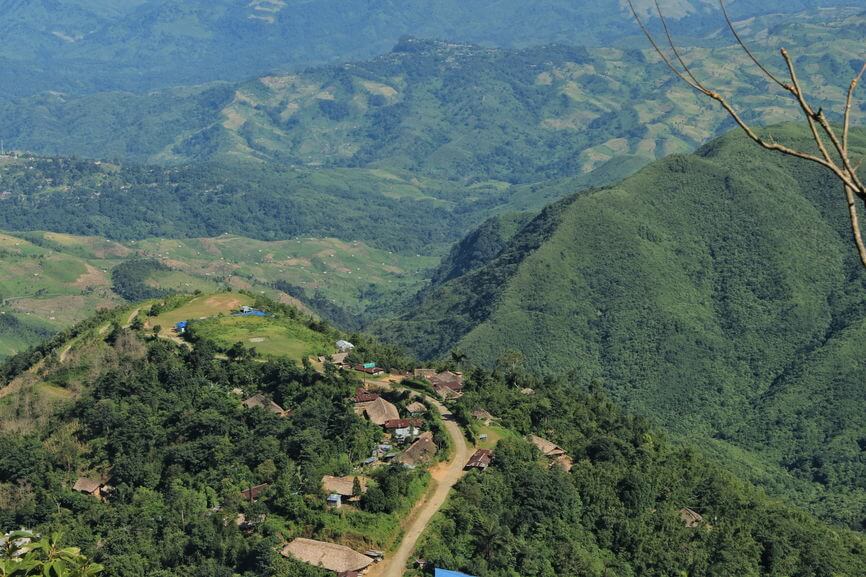
As our car jolted past the spectacular vistas, hills dotted with woodcutter huts and blurred outline of mountains in Myanmar, the bumpy ride through serpentine muddy road took us closer to the headhunters. To the right, hills of Nagaland morphed into the Myanmar hills, bringing alive the imaginary scenery we sketched on our old notebooks. There was an uncanny bewilderment stepping into the Hinterlands of Nagaland – Into the Land of Surviving Tattooed Headhunters, Longwa.
PIN THE POST TO READ LATER
As our car retired for the day upon reaching Longwa, we clumsily got out and were greeted by a bunch of shy and giggling kids. Out of the whole bunch, two kids not more than 10 years had their baby sibling tied on their back. They waved at us and followed us till the threshold of our homestay, as we walked up with our backpacks lunged on our back. The picturesque view and the old melodies flowing through the eerie silence of the village almost bamboozled me into believing we moved back in time, into the 90s!
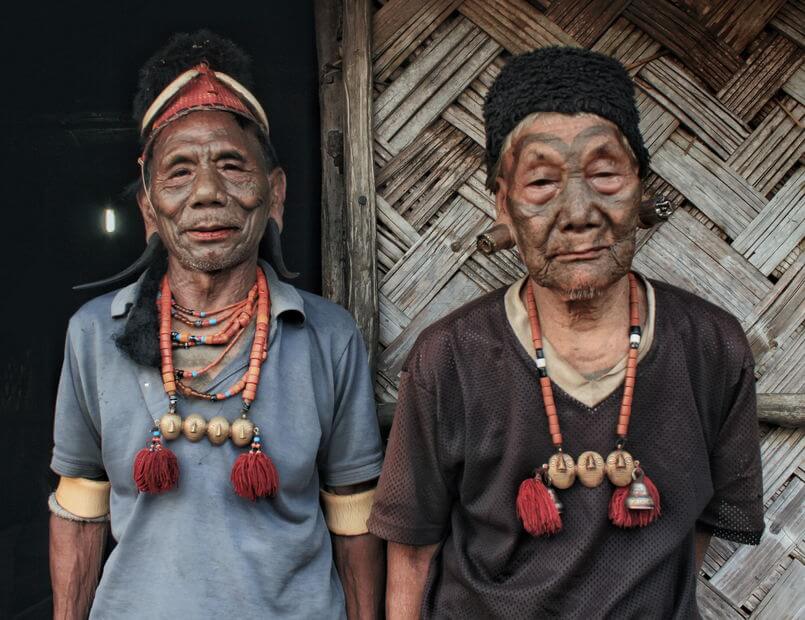
Table of Contents
Journey to the Land of Last Surviving Headhunters
The stories of head hunting and the invincible bravery of the Konyak warriors compelled me to take a journey to their forbidden villages, tucked in the hills of Mon District, Nagaland. The ruthless practice of headhunting continued till 20th century in the Naga Hills dominated by Konyaks. The once fierce tribe, today show signs of valor, through the face and body tattoos wrinkled under the sagging old skin. The aging population, warriors of yesteryear, love showing their tattoos as sign of their fierce gallantry.
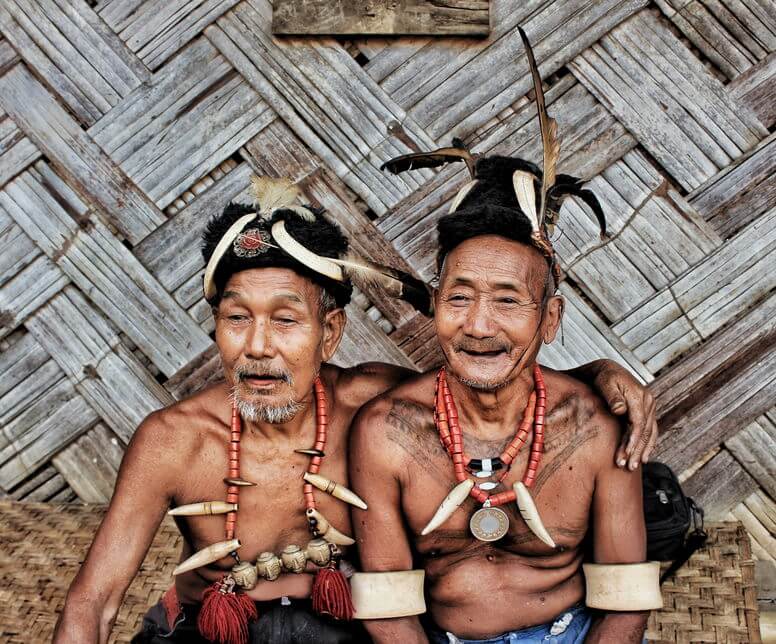
They adorn their necks with traditional beaded neckpieces and brass heads, cover their head with hats decorated with animal hair or feather and some wear ear jewelry made from deer horns. Back in the early 90s and before headhunting was banned, the transition into manhood put youth through bouts of extra-ordinary tests. One becomes man only when he has decapitated a head, fought wars and walked through the pain of getting tattoos – on face, hand, legs, back and chest. The tattoos on woman had different significance.
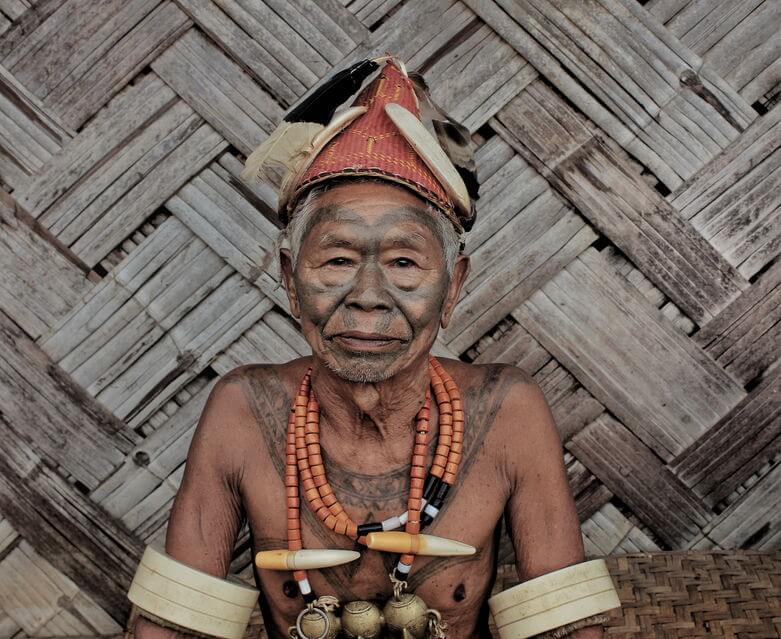
Planning a Trip to Nagaland – Read blogs on Nagaland
Konyak Tribe and their Tattoo Tradition
Tattooing became a way forward – for man, it was a journey from boyhood to manhood as he becomes a warrior and ready for wars. Even the woman had tattoos that revolved and reflected significant events in life. The tattoos played a significant part in distinguishing clans and class from each other. Different clans had different tattoos, the tattoos for warriors and common man was different and they wore them as ornament on their naked bodies, back in those days.
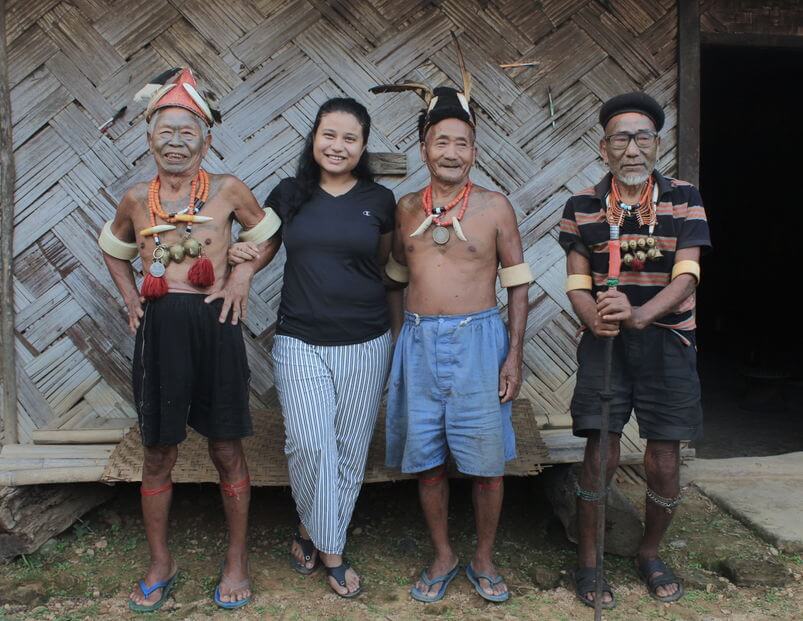
The highest honor with face tattoos was given to the one who bought back the decapitated head. The tattoos were made by woman with help of rattan palm spikes attached to a handcrafted comb. The ink was extracted using resin from Red cedar trees and sometime even lime. The spikes were dipped in it and intricately the traditional tattoos were permanently inked on the body. This was celebrated by slaughter of a pig or cow and a feast was prepared.

Aging Tattooed Warrior of Konyak Tribe 
An old Konyak Woman from Hongphoi Village
The tattoos marked the identity of the person. There are different tattoos used on people depending on their status, condition, position, gender, achievements etc. The designs were different for warriors and common man, different for married and unmarried woman and they marked different achievements of their life. However, with the penetration of missionaries and British, the tradition of tattoo making gradually started to change and so did the ritual of headhunting.
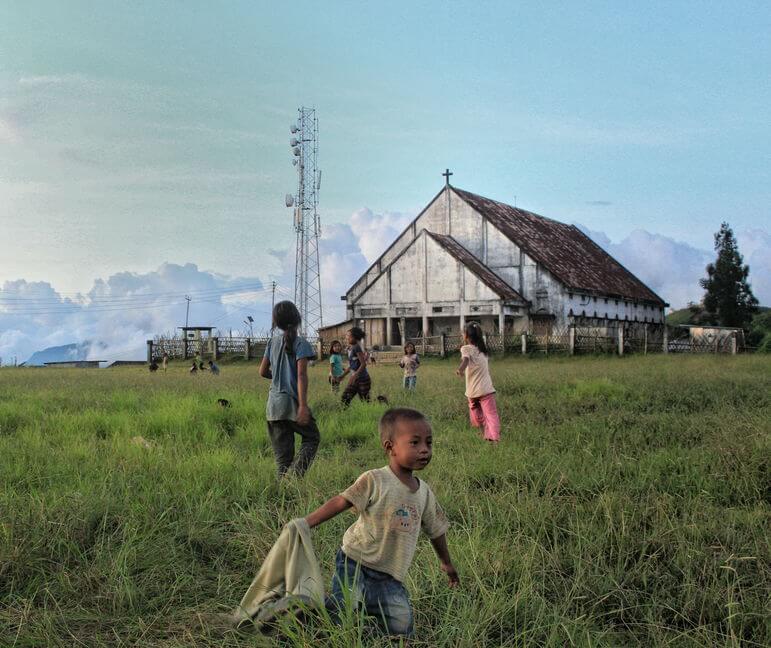
From Headhunting to Embracing Christianity
Konyaks have seen reformations like none other – from being ferocious headhunting warriors to adopting Christianity – missionaries, British and opium, changed everything forever, for good. The missionaries started to penetrate the Naga Hills of Mon District by late 1800s and established some of the first schools around the area. Some took refuge in gaining education and collectively worked towards bringing in peace and end the wars.
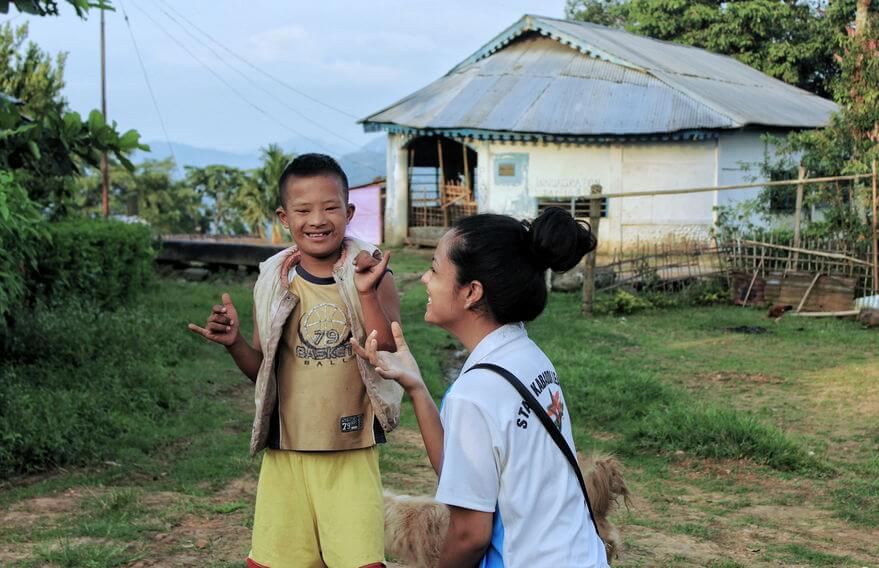
The British Missionaries first set their foot in land of Konyak Warriors in 1830S and hence started the saga of belief in Christianity and their gradual conversion. The British persuaded Christianity as the solution for building a better tomorrow by promising education, health care and a way to dissolve wars. The junction of headhunting practice and embracing Christianity intersected back in 1800’s but head hunting was only banned in 1935 by British.
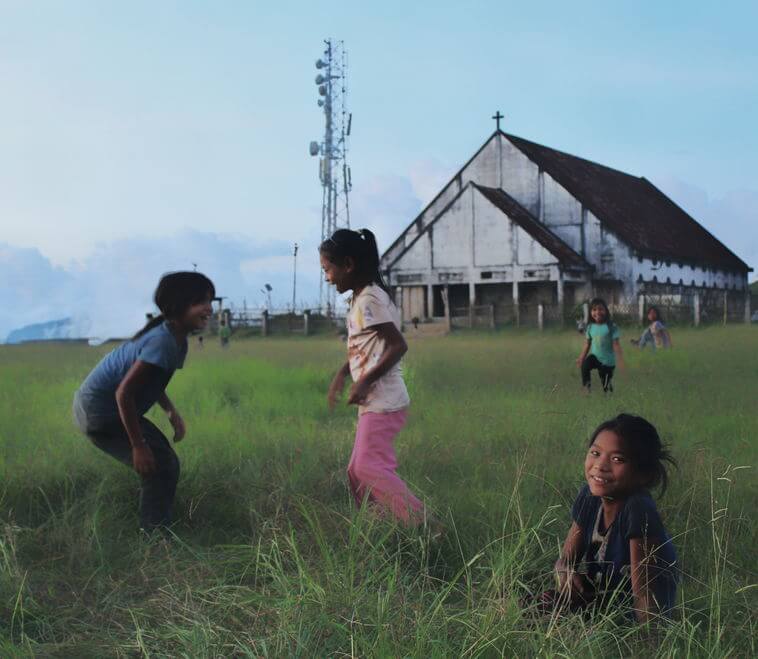
From worshiping nature, sun and moon and hunting heads to attending Sunday Mass in church, the journey has been a remarkable example of refinement. Every evening as the curtain for the day fall, the Jesus loving villagers march back home in flocks from the church, blasting their speakers in some Gospel or melodies rented from the 90s, with the roads dotted with flash lights.
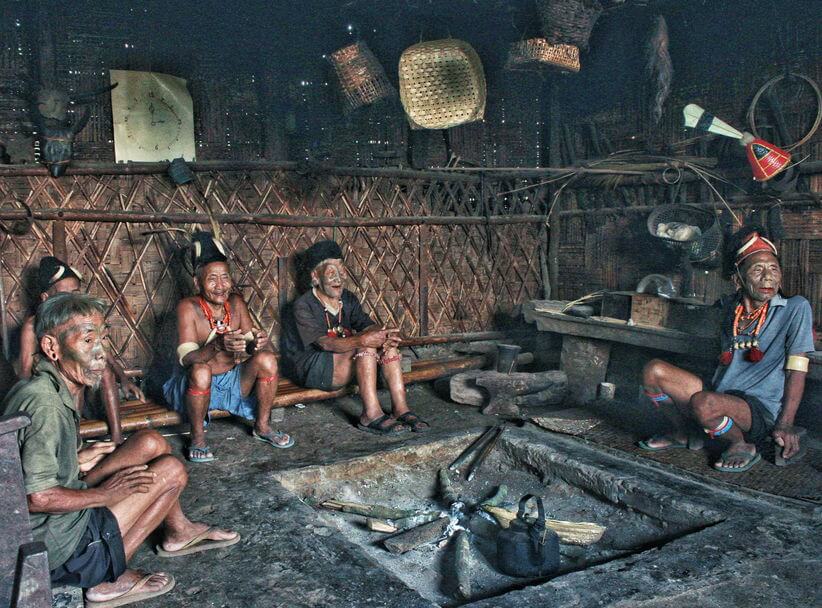
An Evening Spent in Hongphoi Village
We spent our first night in Mon Town and drove to Hongphoi Village in the afternoon. The narrow road was flanked with bamboo trees. The colors of twilight just started to creep in as we walked into the village. A group of curious kids gathered and watched us from far, bunch of villagers walked back from their farms with baskets full of rice or vegetables balanced on their head and young boys played their ritualistic evening football.
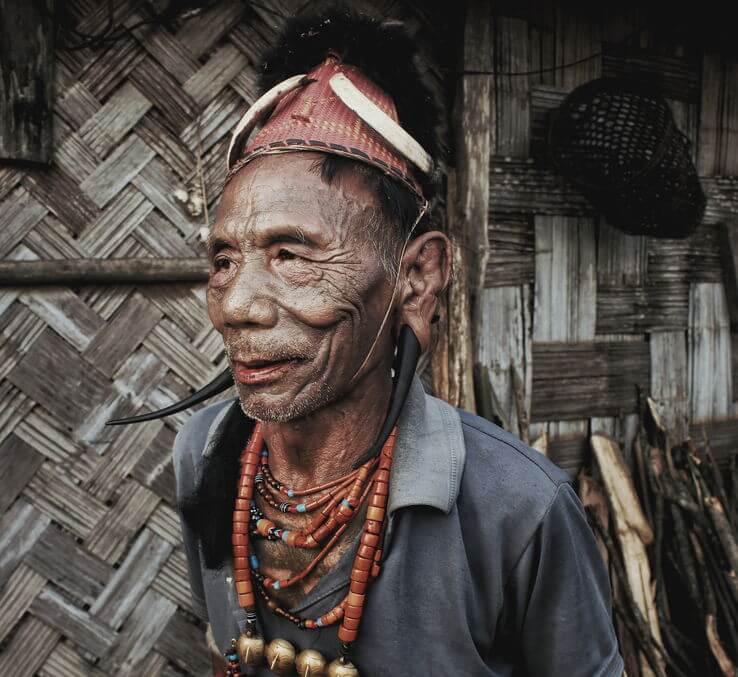
As we wandered clueless, we were greeted by a tattooed elderly man, colorful beaded traditional jewelry and miniature brass heads hung from his neck. He flaunted a traditional hat decorated with wild boar hair on his head. I recognized him as a warrior instantly; his tattoos defined it all, but today his calm demeanor and happy face spoke a different story. He had a warm smile and accompanied us to the Chief’s (Angh) house.
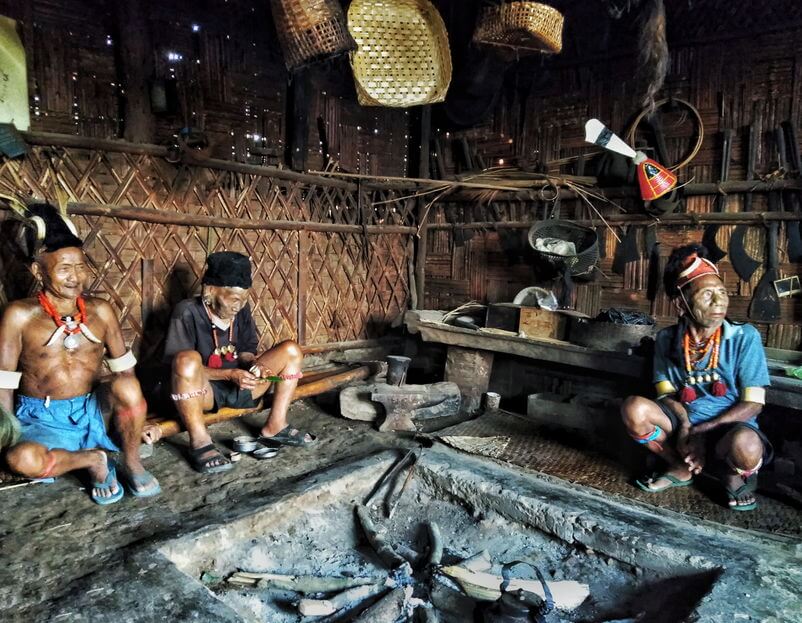
Including him, there were five villager elderly seated around the earthen cooking space in their traditional Naga kitchen. In Naga culture, most of the houses have a huge kitchen that doubles up as living room. There is a faint blend of modernity with antique as the kitchen today consists of modern gas with cylinder and earthen stoves in the center with fence like racks stacked above it for drying meat and other food.
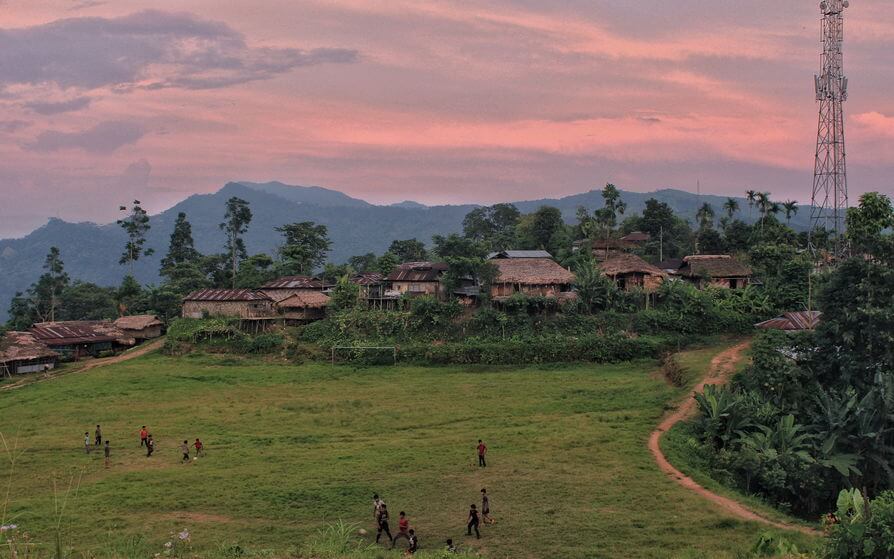
We spoken in length about a lot of things – some understood, some confused and some forgotten. All the elders had tattoos on their face and body signifying they were warrior once. They spoke about head hunting, Christianity and how they want only peace today. Before we left, they treated us with some organic pineapples freshly chopped from their kitchen garden.
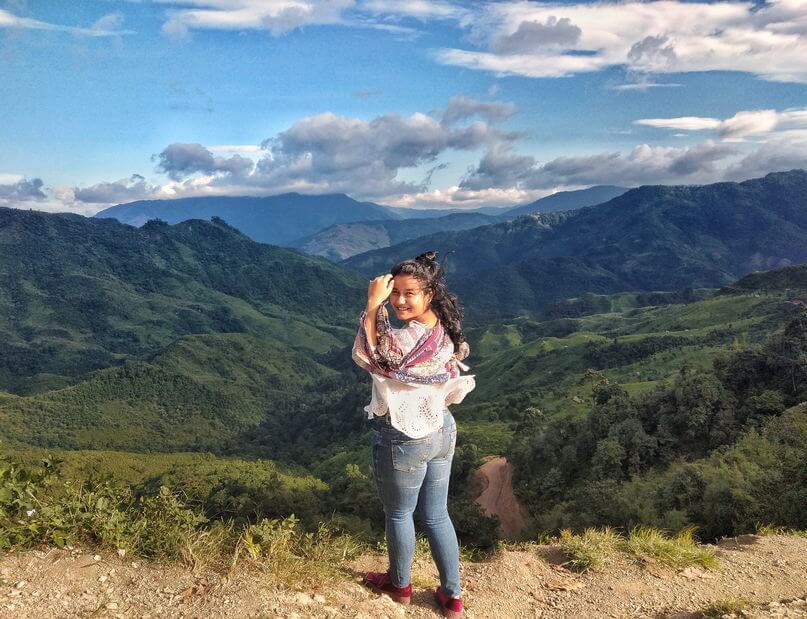
Longwa Village – Forbidden Stories of Konyaks
Longwa is the most popular village with stories of headhunting and home to some of the fading population of headhunters. However, Longwa in those days of war was considered to be one of the weakest villages in comparison to others. There are many villages in and around Mon but Longwa is the most accessible with homestay option and convenient connectivity. The Indo-Myanmar border is another feather on the hat that makes Longwa popular apart from the ancient headhunting practice. It is a pretty big village with around 700 households.
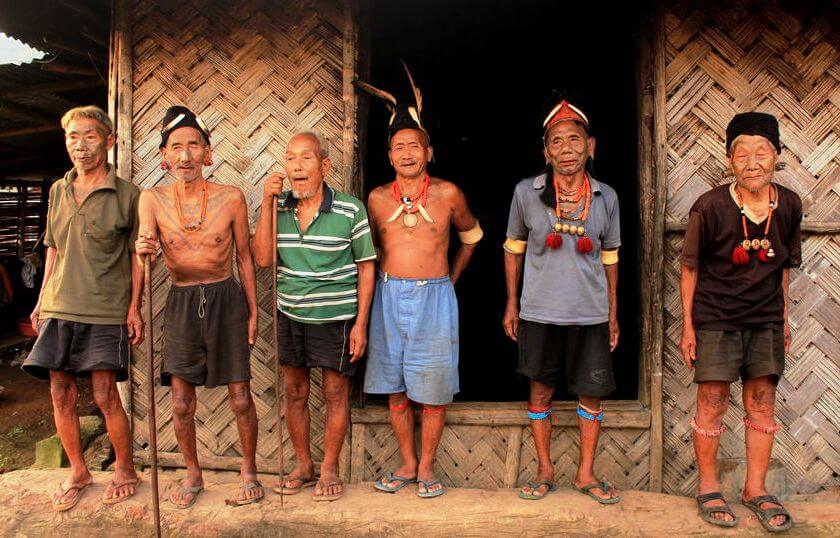
Meeting the Surviving Tattooed Headhunters
Longwa village has few of the last surviving headhunters but we could not meet them. We met an old warrior (father of Jeilei homestay’s owner) and learnt a little about headhunting practice. He was around 80 year old, never actually witnessed headhunting but was a warrior who went for wars back in those days of unrest. The tattoos prove that he had a painful transition from being a boy to manhood, pierced with palm spikes and inked.

The wild deer horns are used as ear accessory 
The face tattoos are sign of their manhood
He wore his traditional dress, hung in some more tribal beads and bras s heads, the deer horns were already accessorized on his ear, the hat with wild boar hair adjusted and reminiscence on his warrior by holding the spear. He occasionally glanced at the guns decorated on the blacked bamboo walls of his longhouse, saying something that faded in communication gap. He prayed for peace today after witnessing so much gory and bloodshed a decade back.
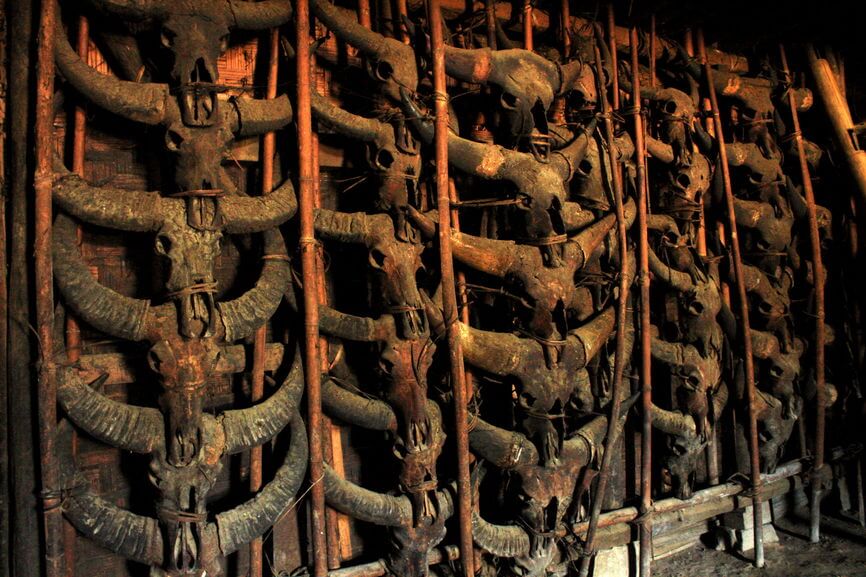
Visiting the King’s Home (Chief Angh)
Although we could not meet the King but we did visit his house, decorated traditional with Konyak artifacts, weapons and skulls of hunted animals. The Opium addiction took a toll on the King and he had to join a detoxification camp, a large hoarding we saw stringed on the army check post.
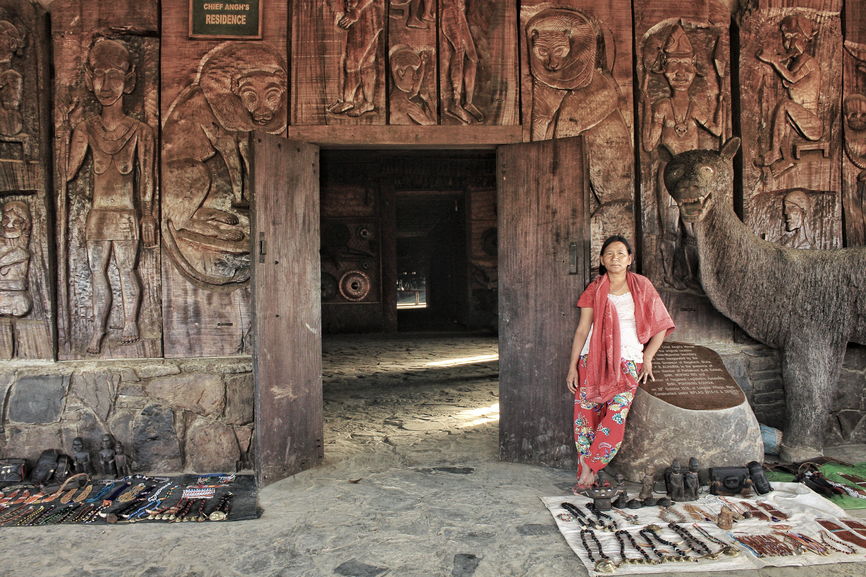
The King resides in a large longhouse and the façade wall is made of wood with beautiful carvings of animals, humans and skulls. The carvings on the wood are done by Konyak craftsman and reflect stories and traditions of the tribe. The first room is decorated with animal skulls and bones, blackened and browned through years of preservation.

The best time with the best people 
The decorations inside King’s Longhouse
As you move inside, the life size traditional kitchen with traces of modernity is the next. It is pretty much the heart of the house, extremely huge and the walls adorned with artifacts made of wood, beads, brass heads and weapons. Few woman sell handicrafts and jewelry on the verandah of the King’s House.
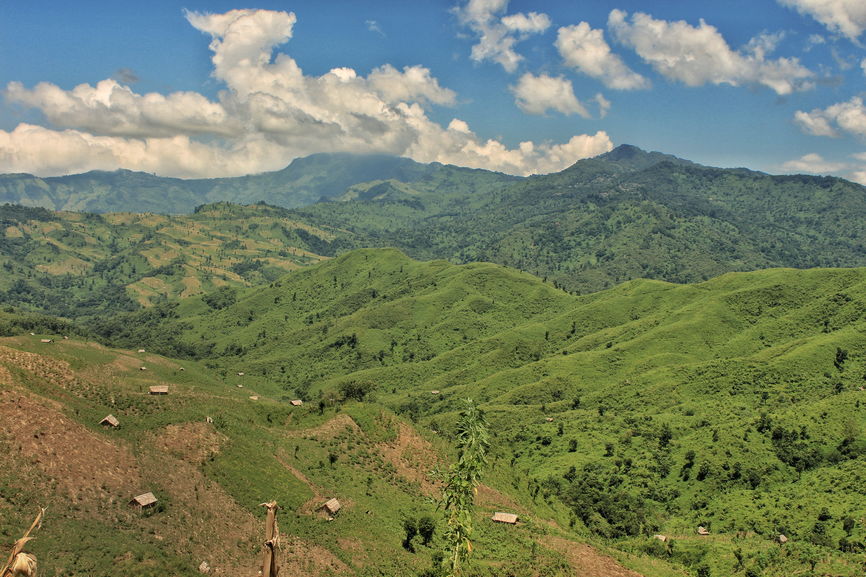
Curious Case of Dual Citizenship
“The king of Longwa eat in India and sleep in Myanmar” – A statement you must have read if you know a little bit about Longwa or planning a trip lately. The King’s House, as per old geographical boundaries, is on the border of India and Myanmar. One side of the house falls in India and the other Myanmar; you can walk in and out like a boss. The people of the village have dual citizenship of both countries with unchecked trading and movement. Longwa is perched on the border – a part in India and the other in Myanmar, answering to the citizenship privilege. There is a healthy trade between India and Myanmar through Longwa between the villagers.
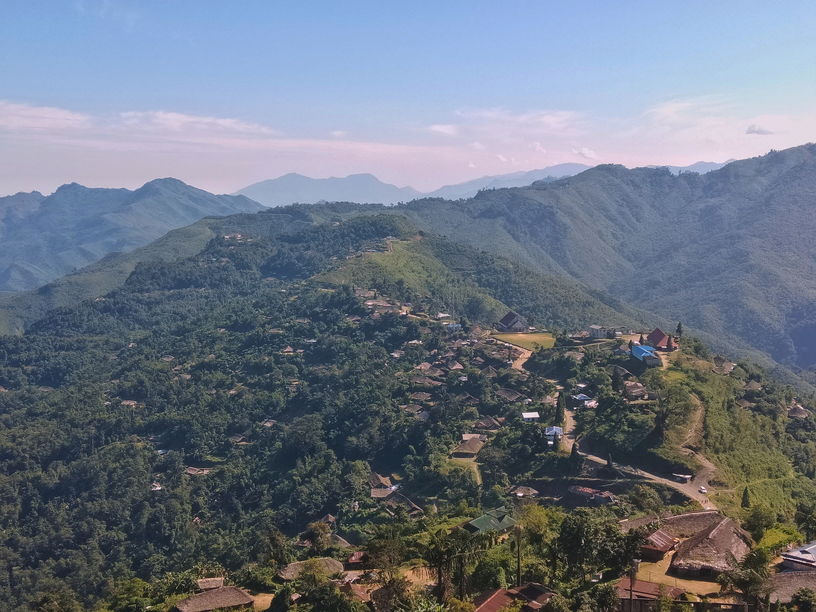
A Known Opium Den since a Decade
The colonization of Longwa by British not only brought education and mannerism but also opium. The drug was introduced to pacify the aggressive Konyak Tribe and build a friendly relationship with them. Soon the fumes of opium consumed the people of the village in its psychedelic claws, sobered the aggressive tribe but not without tying them to the hands of addiction. The epidemic abuse of the drug since 1940s disrupted the balance of family life.
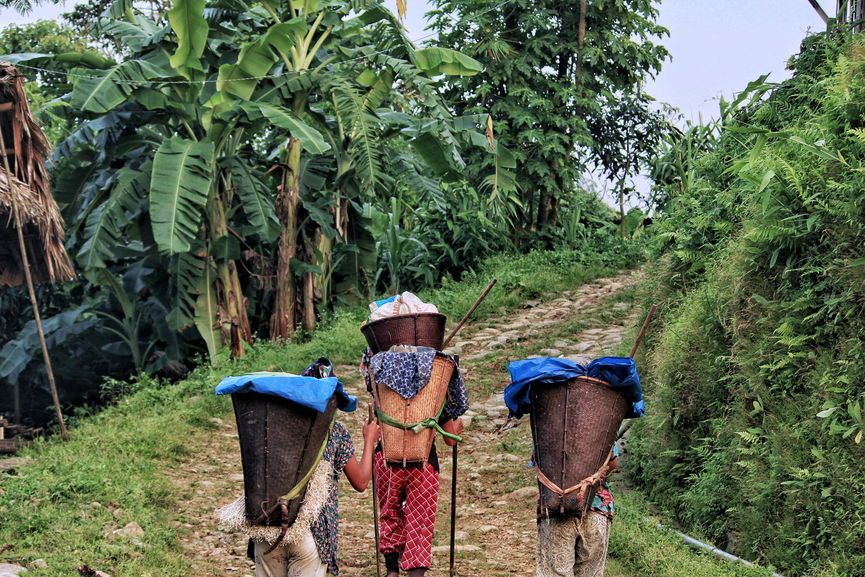
Before opium arrived, the men were responsible for going into fields and forests and women took care of kids and did home chores. Getting sucked into opium, the men have today become lazy and lethargic, forcing women to work in the fields, raise kids and also do all the chores at home. The stories of opium addiction evokes a very sad state of affair, a lot of money forwarded for community upliftment is filtered and used for opium trade from Myanmar.
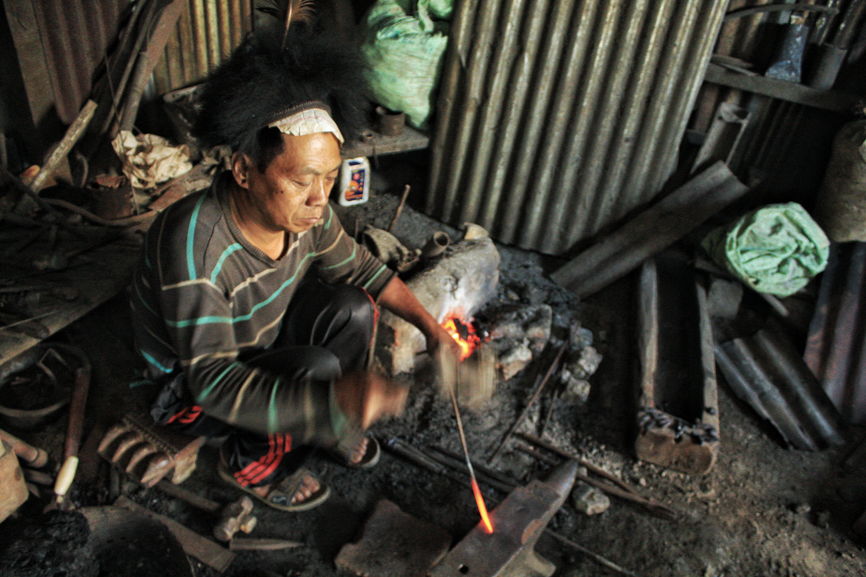
Gun Makers of Longwa
An old gun making factory functions actively in Longwa and has been in existence since 7 decades. After the wars were over and headhunting was banned, some blacksmiths learnt the art of gun making from Ahom Dynasty (as per resources). Ever since gun making has been passed from generation to generation but today just a handful of them are involved in gun making.

That was a heavy gun though 
Wangsha is a self taught blacksmith
We met Wangshep, a blacksmith who learnt gun making on his own and was not something that was passed on to him from his father. Often, on the cobbled and muddy streets of Longwa, you would find villagers walking with a sling gun on their back – products of the gun making factory. The base of the guns are made of wood and cased in metal. Wangshep, spoke about the process of gun making, time taken for each gun and the orders as he hammered a piece of metal after turning it red hot.
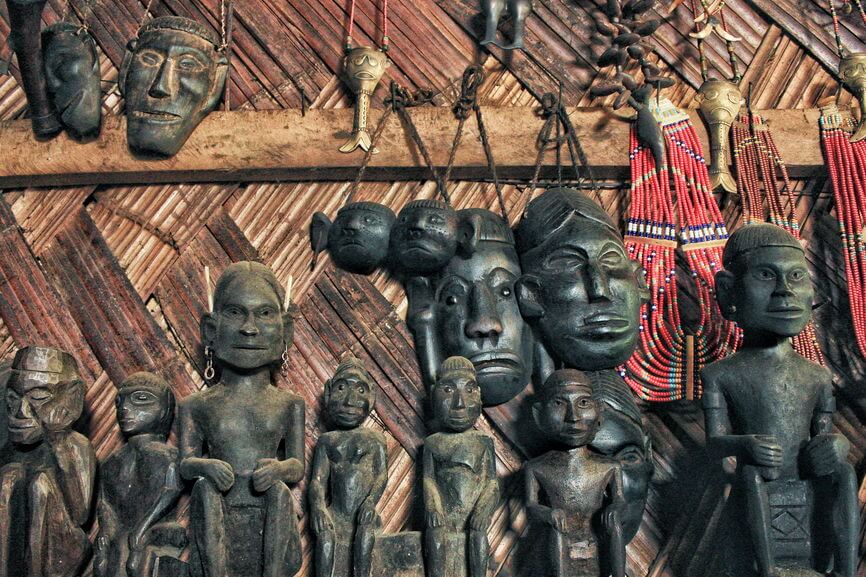
World of Artists and their handmade creations
The Konyak artisans and craftsman have tamed their way to making unique and fine wood carved statues, masks and many other traditional decors. The decorative figurines are carved out of wood and black polished that keep the rawness of the piece intact. The excellence of craftsmanship of Konyaks is depicted through their carpentry, carving and bamboo weaving work.
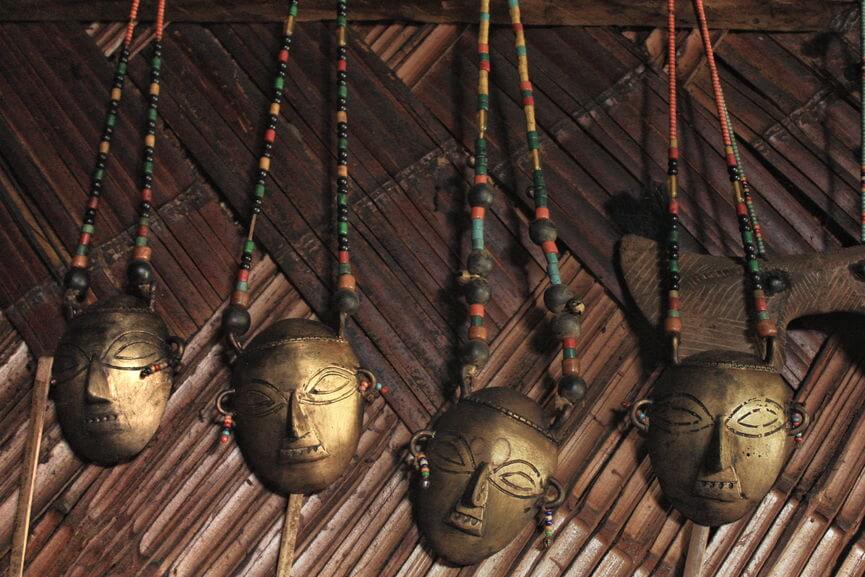
The intricate brass work and bras miniature heads are used with the traditional jewelry. Men are mostly involved in wooden carving and carpentry work and women sit outside their verandah making beaded traditional jewelry. Please make sure you buy these amazing pieces of artwork, perfect souvenir to add to your home décor.

Konyal Lady making beaded tribal jewelry 
The beads for the jewelry
How to Reach Mon Town and Longwa?
In order to reach Mon Town, the nearest railhead is Bhojo and airport is Jorhat.
- From Bhojo – Take a train to Bhojo, hop on a shared taxi to Sonari and take a bus to Mon Town.
- From Dimapur/Kohima – There are direct buses and shared taxis available up to Mon Town. Brace yourself for the roads are terrible. The buses leave mostly by afternoon and the shared taxis leave early in the morning. Make sure to make tickets a day before.
- Join a tour – If both the options are not convenient, you can join a group tour.
From Mon Town to Longwa – There are shared taxis that ply from Mon to Longwa twice a day except for weekends. One is at 9.30 am and the other at 1.30 pm (not sure about the timing though). Please book your seats in advance.
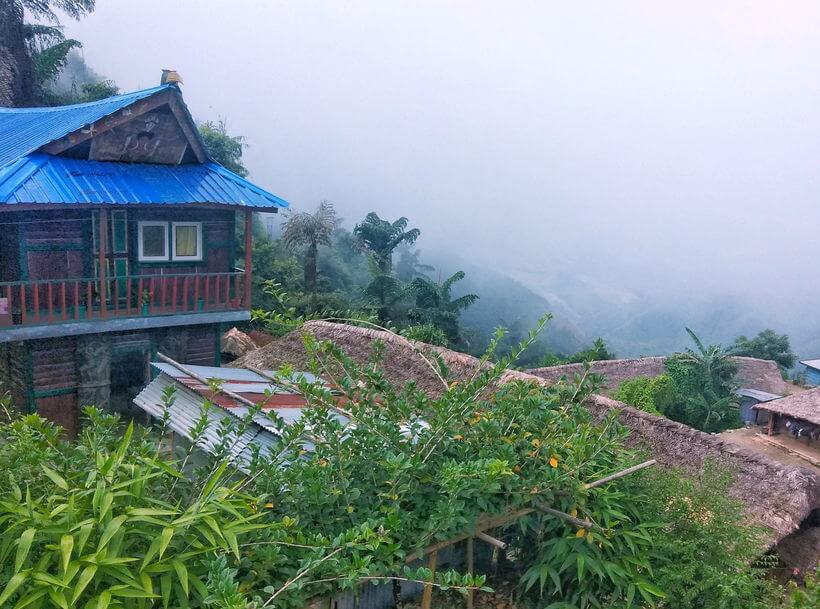
Accommodation in Mon and Longwa
For Mon Town – There are few hotels and a guest house in Mon Town. For booking for Mon Town, contact Taiphaie at 9436433782
For Longwa – There are couple of homestays available in Longwa. You can stay either at Jeilei’s homestay (contact number – 8732093138) or Longsha Homestay (contact number – 8974390751)
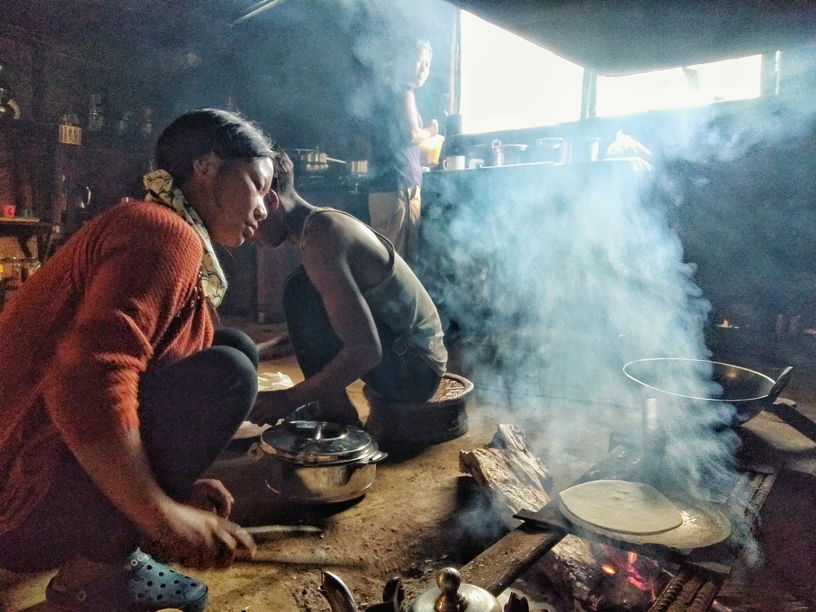

The view from Longwa Village 
The wooden carvings are so gorgeous
Things to Know Before Visiting Longwa Village
- You need an ILP to visit Nagaland and the only people exempted from it are the residents and individuals employed in the state.
- It is highly recommended to hire a guide to show you around, yelp you understand more about the village and its history. To visit the King, ex-headhunters and gun factory, have someone guide you.
- The Angh or King of the Village is respected by the people. Do not enter his house on your own as you would need a local person accompanying you.
- After you meet the tattooed surviving headhunters and warriors, interact and click pictures, you need to make a donation. Make sure to keep extra money for that. I paid around Rs 100 – 200 to each of them.
- There is presence of army throughout the way and in the village as it is situated in the Indo-Myanmar Border. Co-operate with army and register your names as you arrive. The Guerilla forces have their camps in the Myanmar side and it is a sensitive area. Do not wander off alone to unknown areas.
- Please do not bargain with the artifact sellers. They need the money and the price quoted for the figurines, brass artifacts and jewelry is not very high. Help the community to grow and sustain.
- The transportation is limited and not available on weekends. Please plan your trip accordingly and book in advance.
LOVED READING THE POST – PIN IT AND PLAN YOUR TRIP
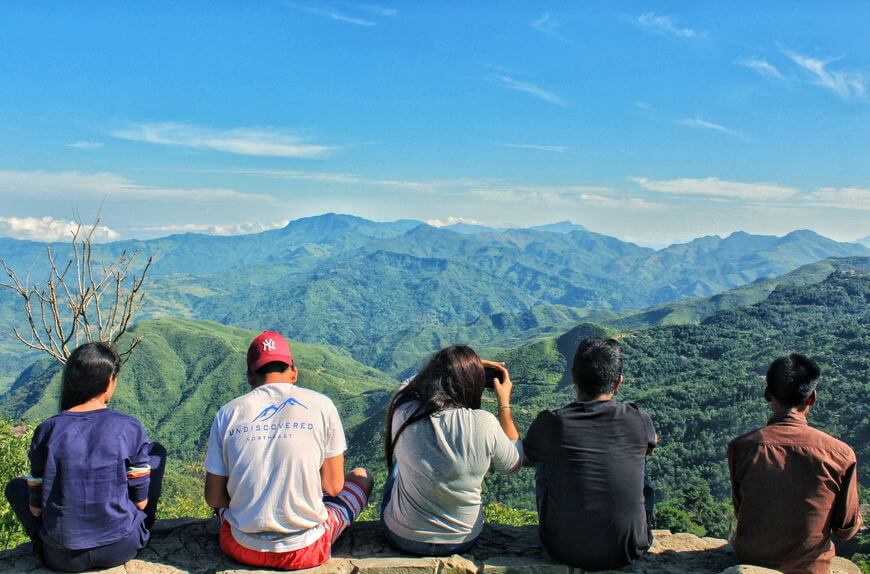
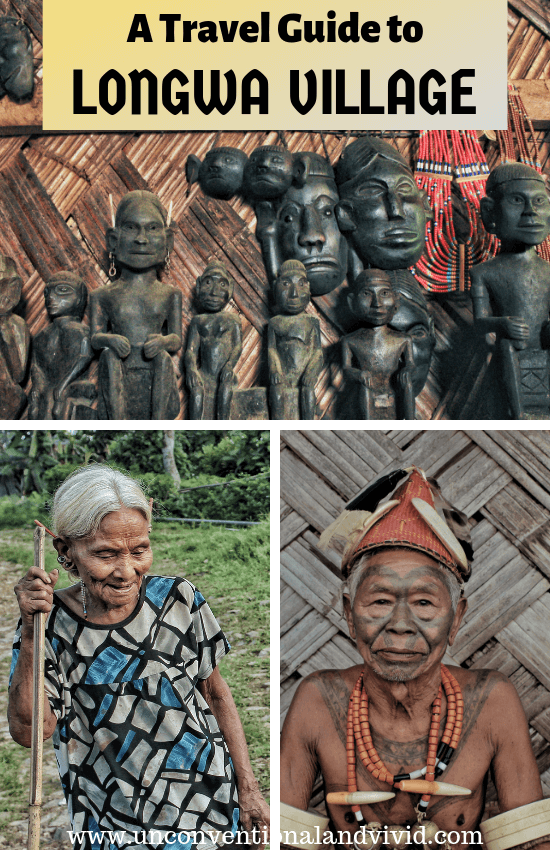
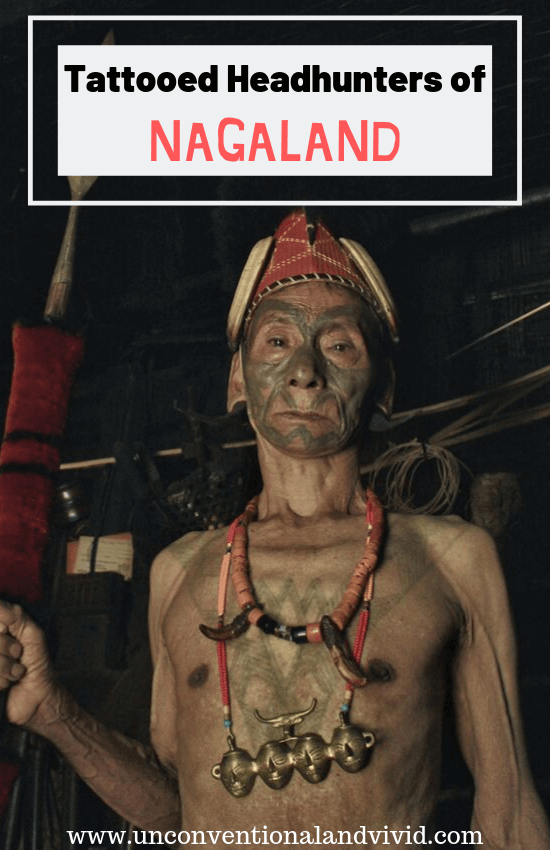
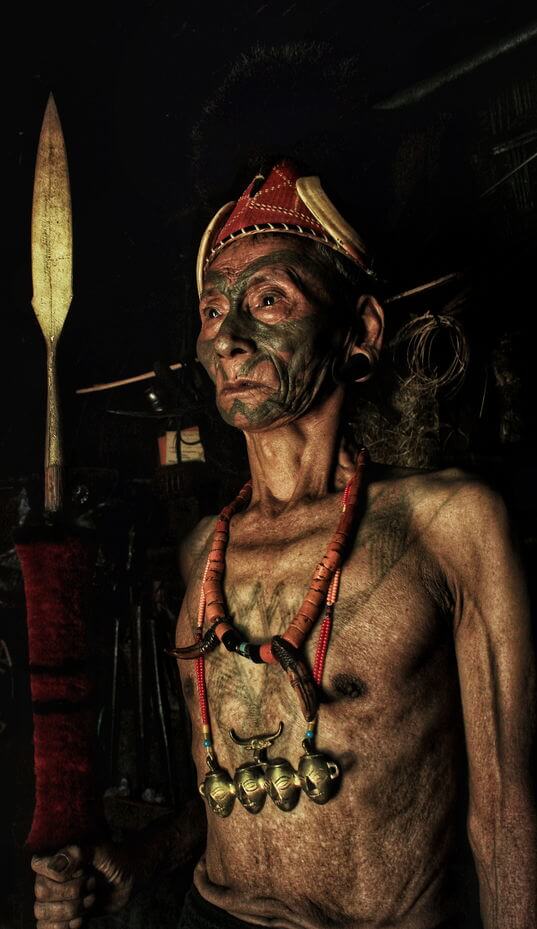
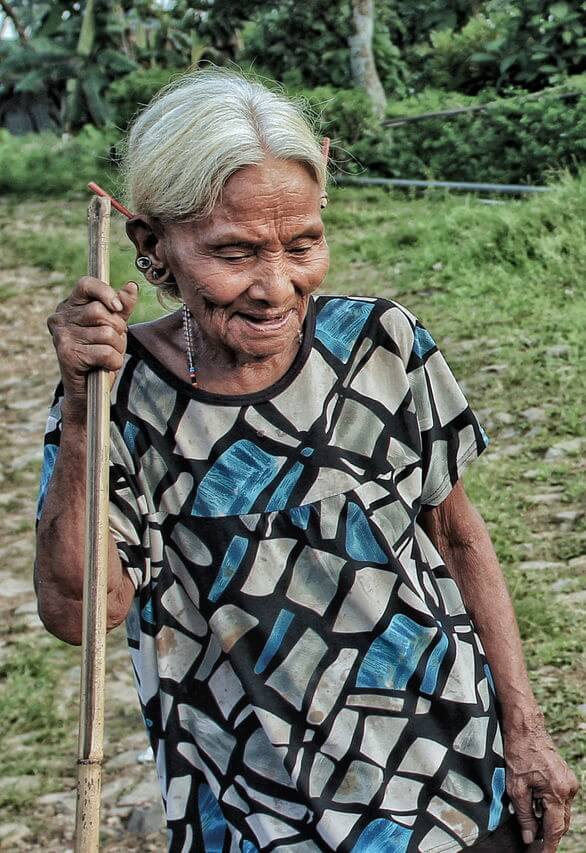
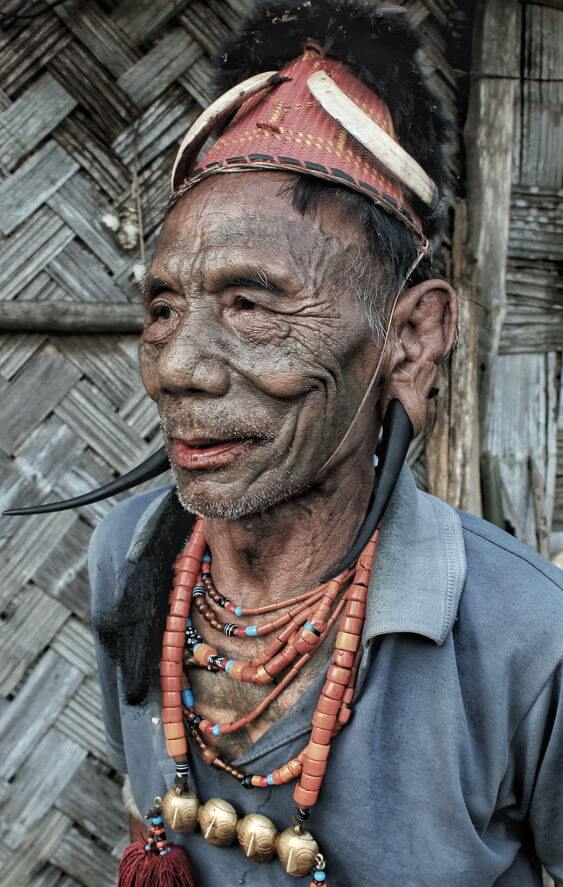
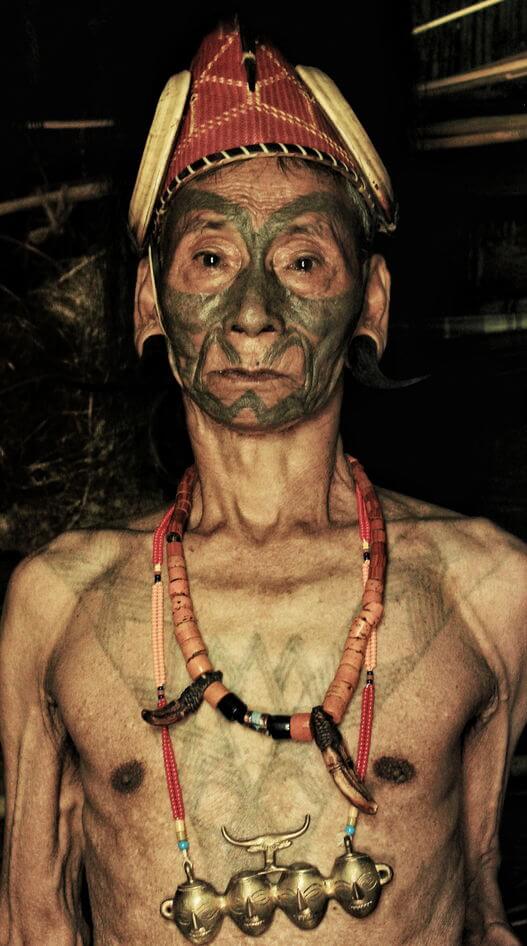
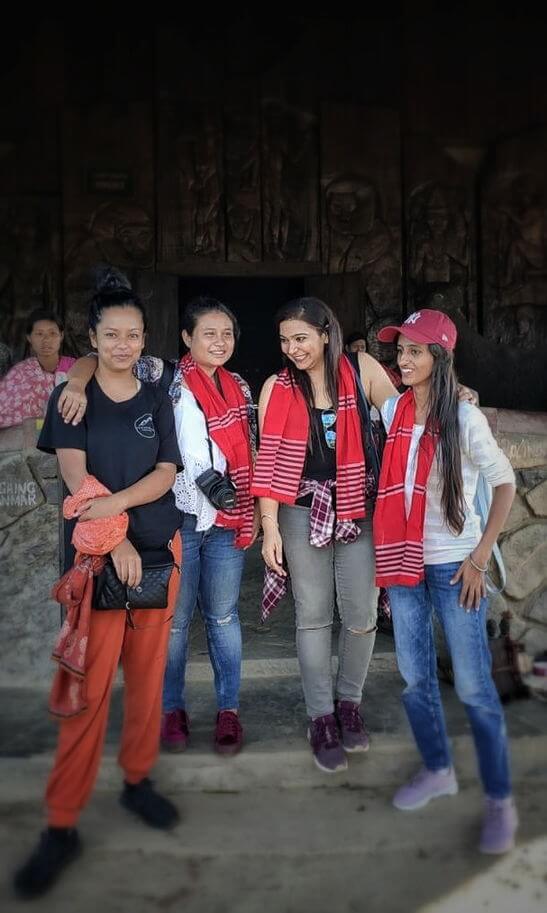
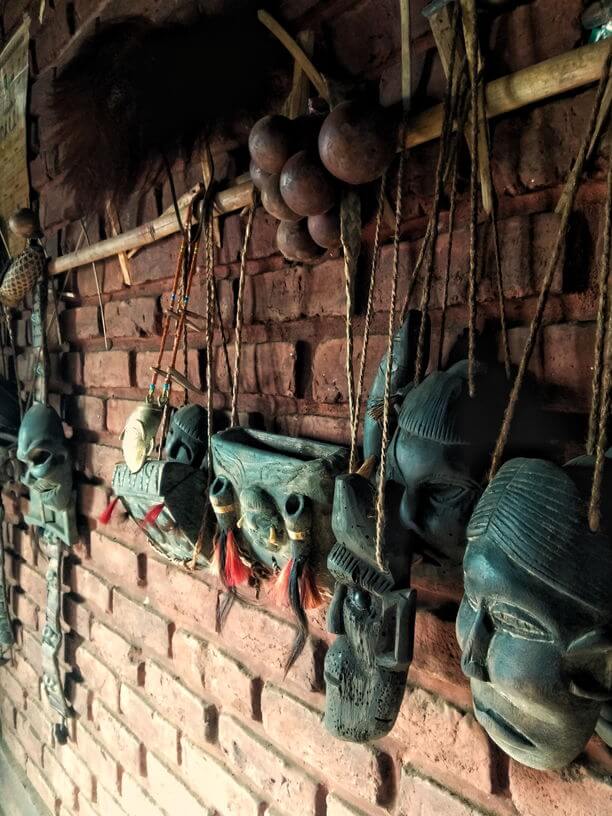
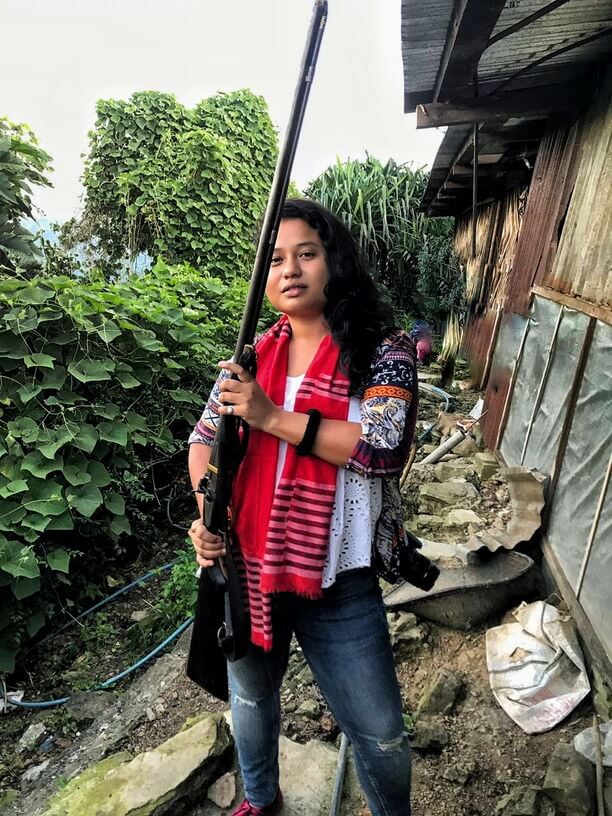
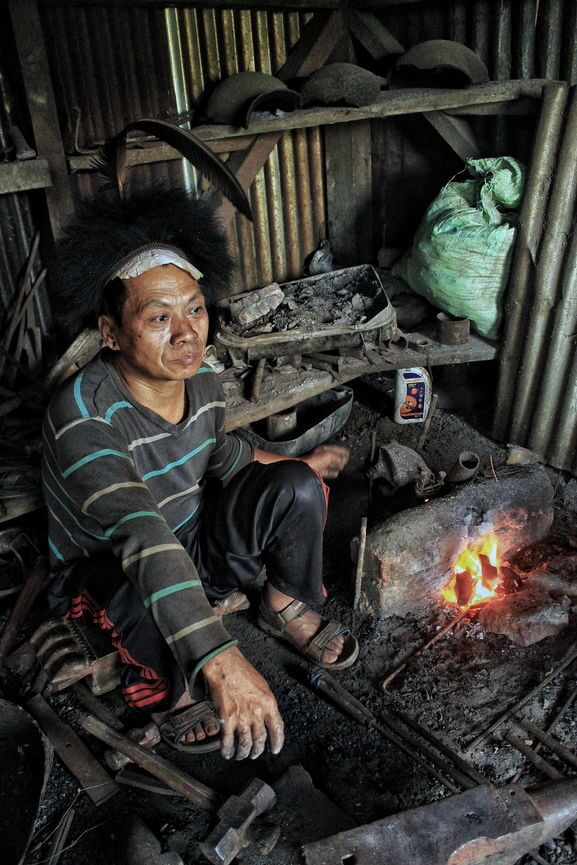

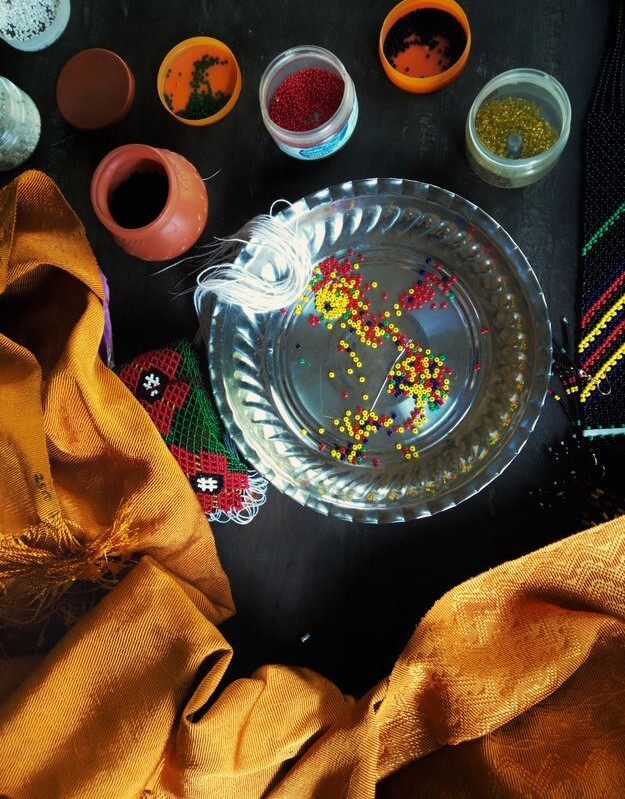
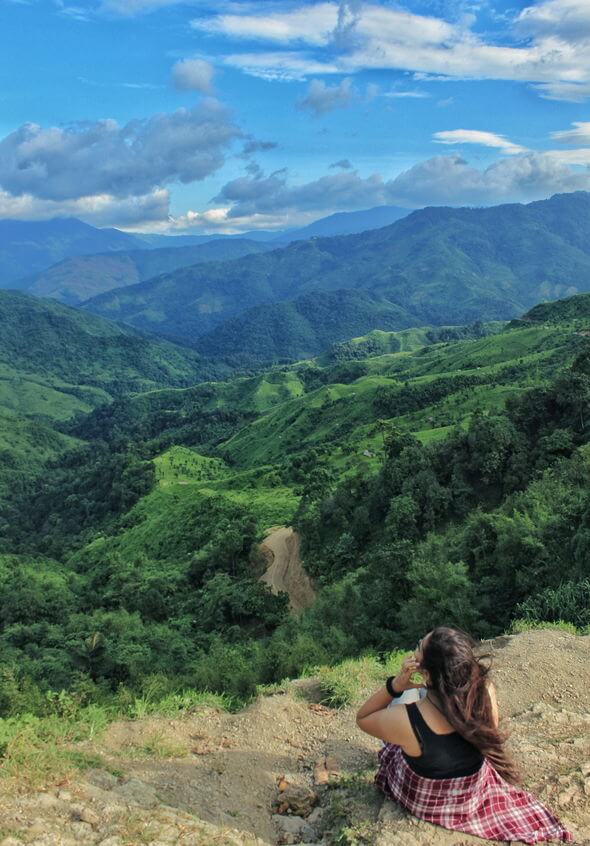
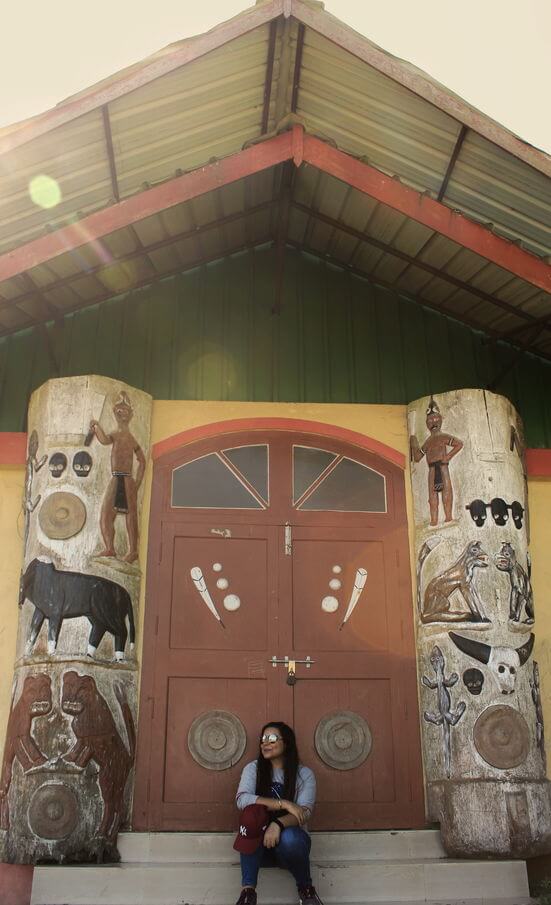
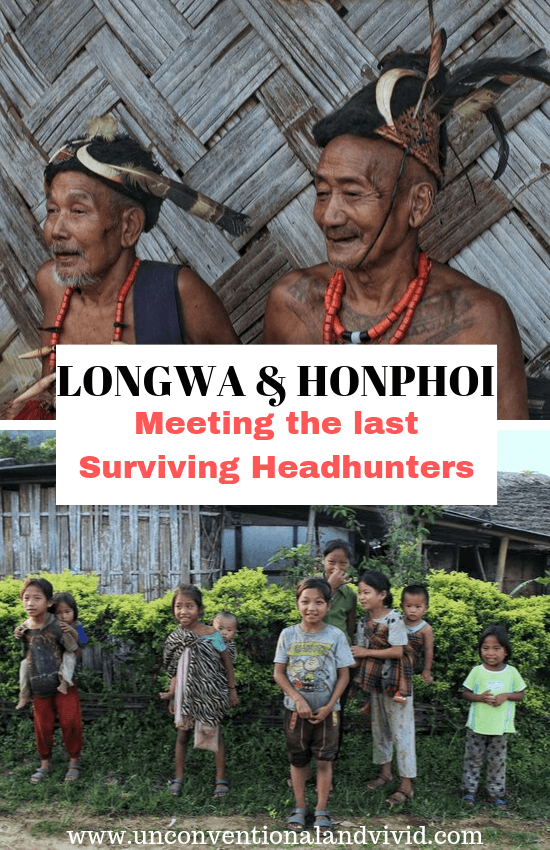
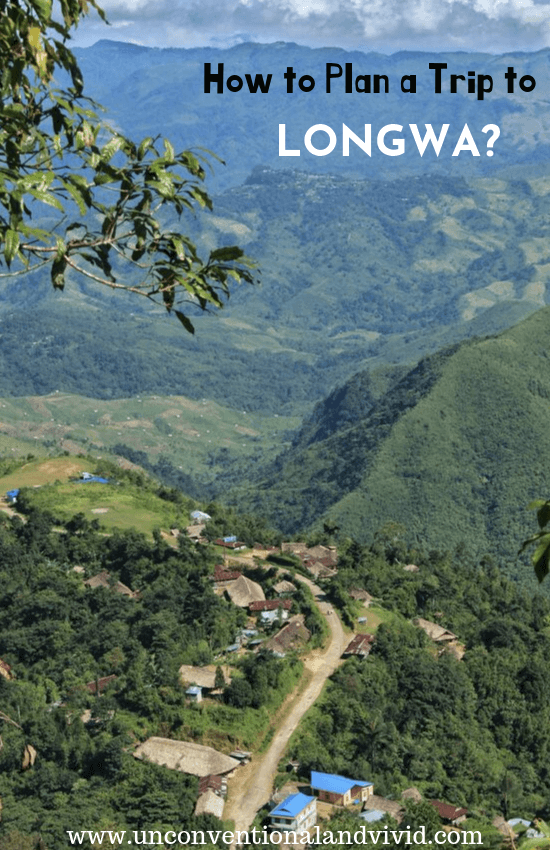

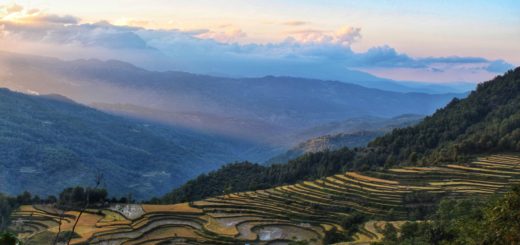
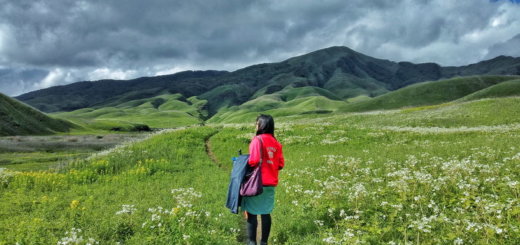
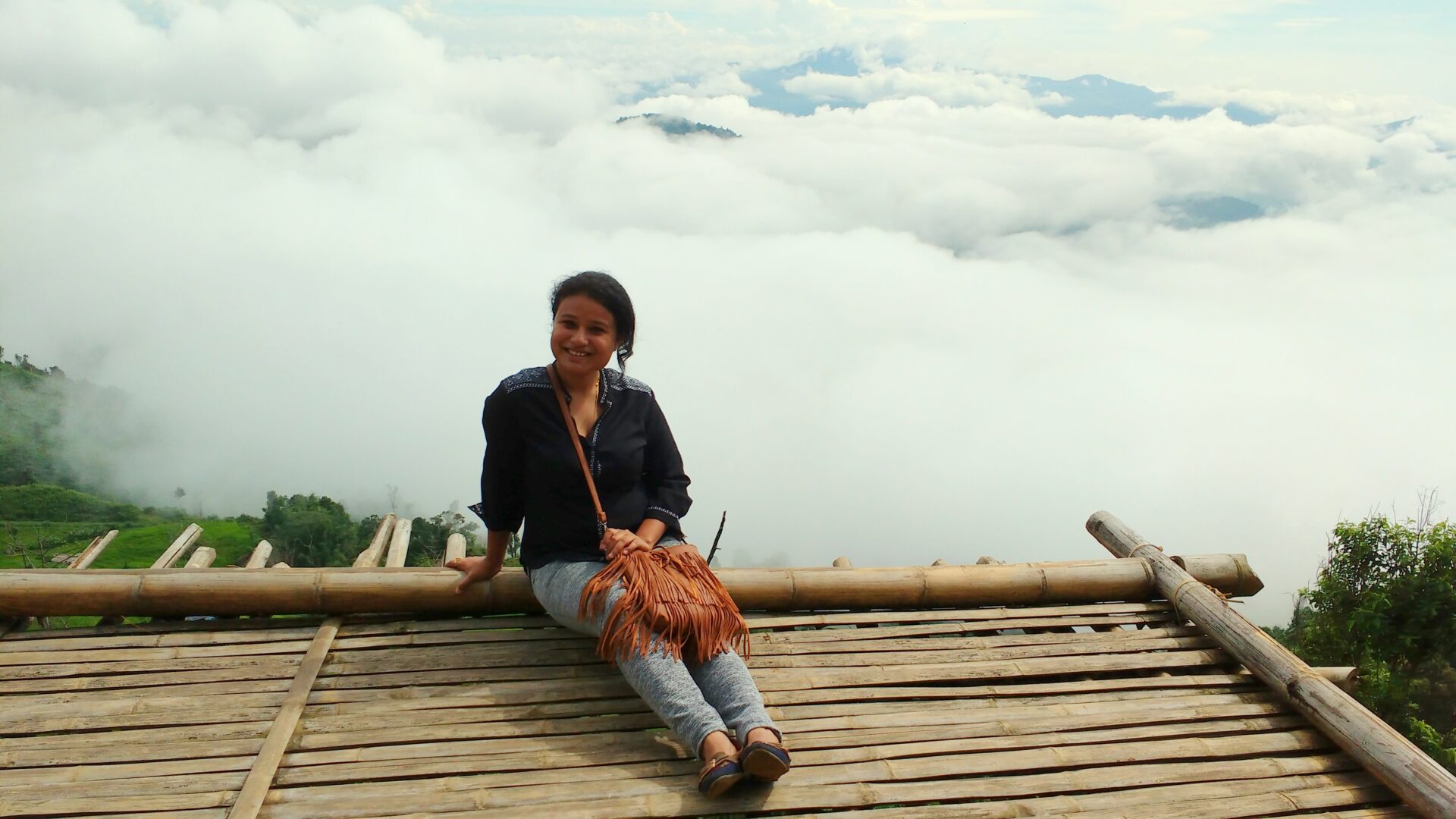
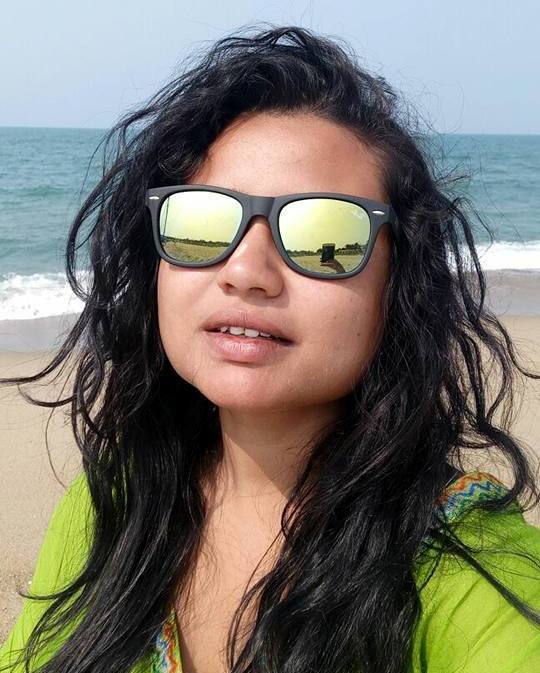
Informative writings
Thank you 🙂